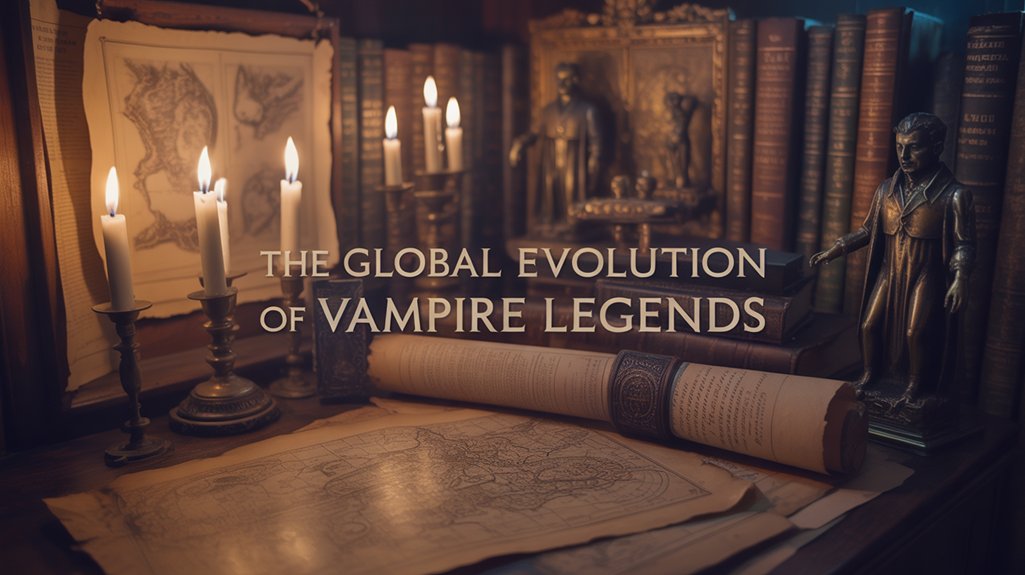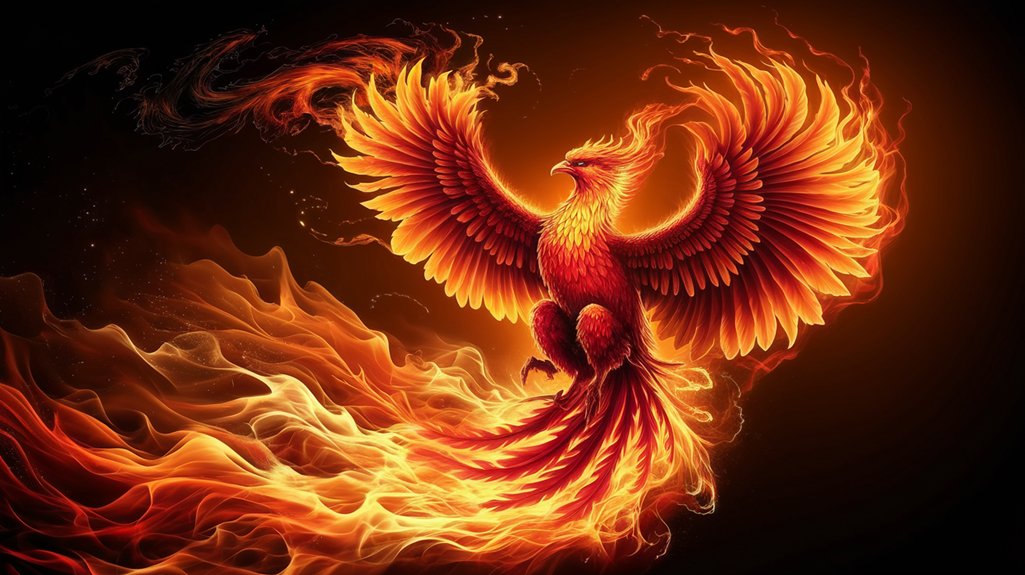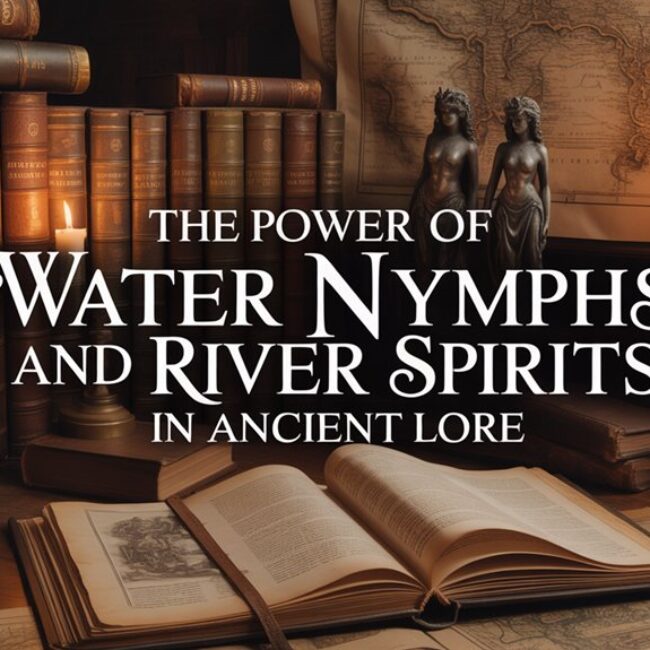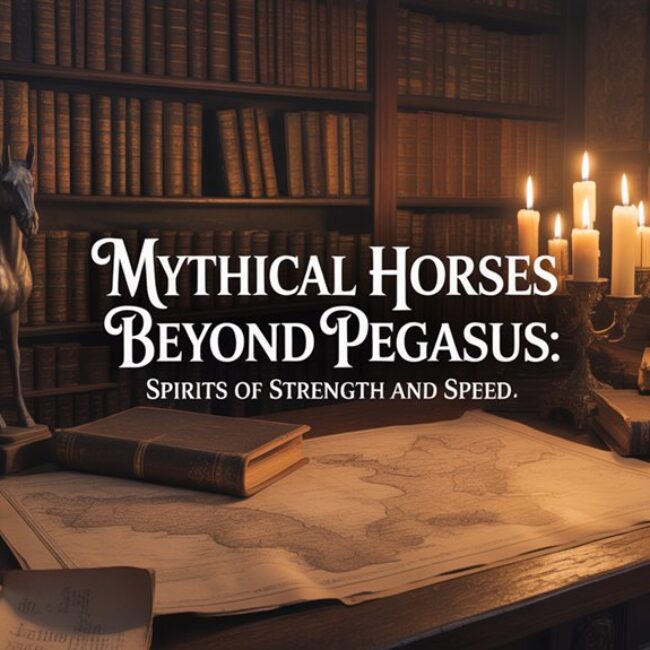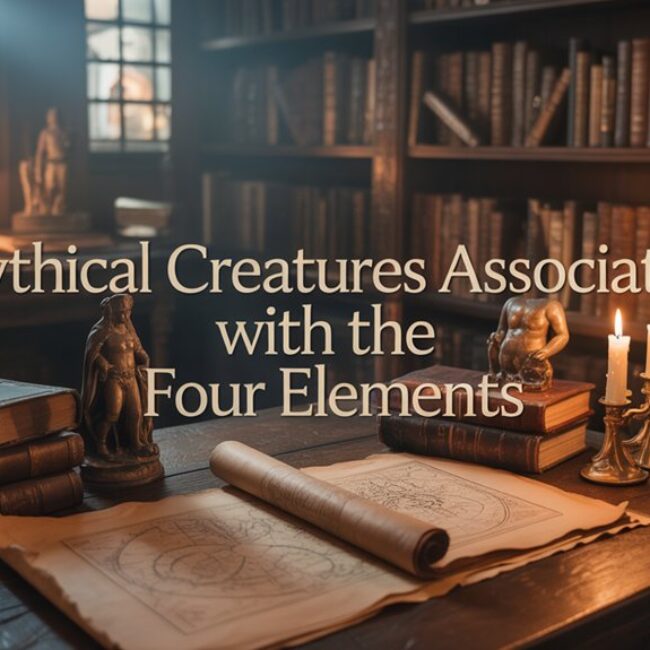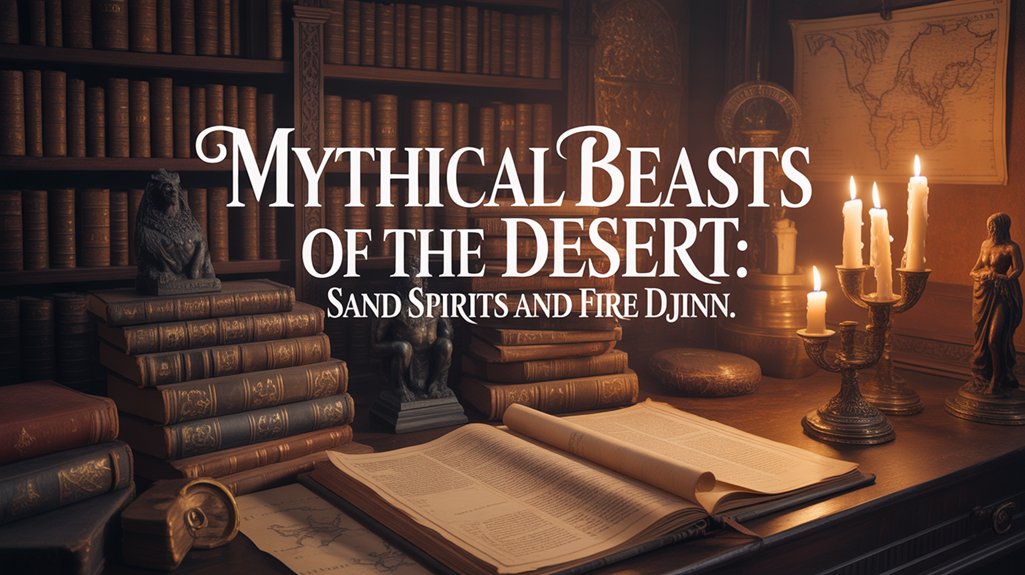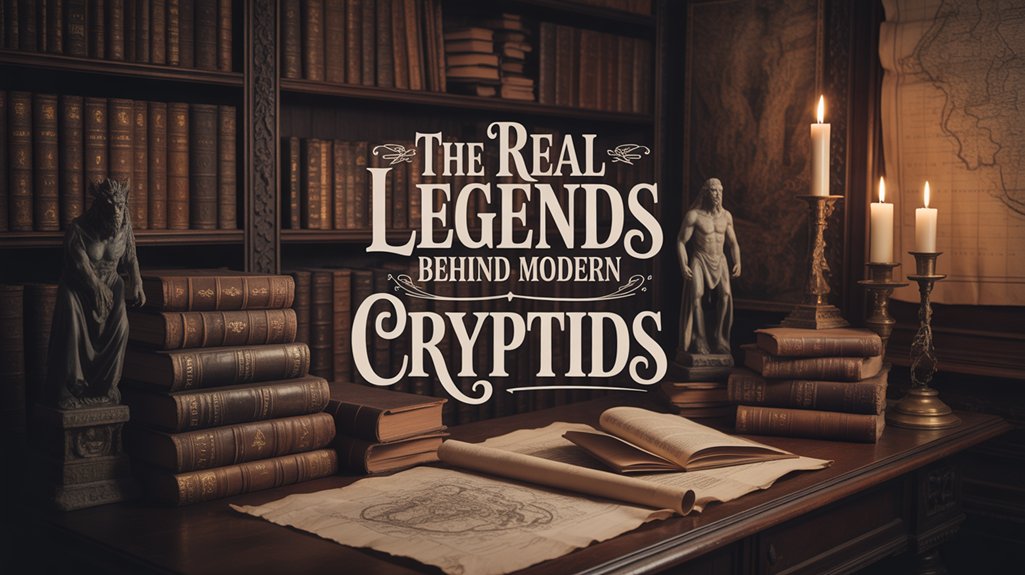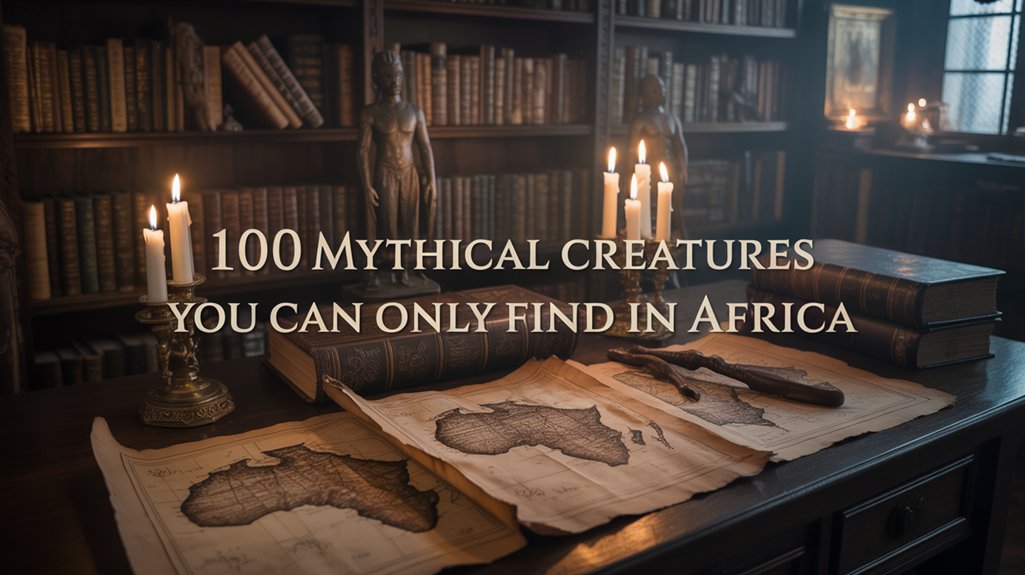
Vampire legends emerged from Mesopotamian blood-drinking demons like Lilitu and Lamashtu around 2400 BCE, spreading through Greek vrykolakas traditions and Jewish folklore’s shape-shifting Lilith before crystallizing in Eastern European undead myths. Vlad III’s fifteenth-century impalement tactics merged with Slavic revenant fears, while medical misunderstandings of porphyria and post-mortem decomposition fueled exhumations across Habsburg territories during the 1720s. Bram Stoker’s 1897 *Dracula* synthesized these disparate threads into literature’s definitive vampire archetype, spawning contemporary interpretations that alter ancient parasitic entities into complex anti-heroes reflecting evolving anxieties about mortality, sexuality, and otherness—a metamorphosis traced through specific cultural crossroads and historical catalysts explored further within.
Table of Contents
ToggleKey Takeaways
- Ancient Mesopotamian blood-drinking demons like Lilith and Lamashtu established the earliest documented vampiric entities around 2400-600 BCE.
- The term “vampire” first appeared in European texts in 1725, following Habsburg investigations of undead reports in the 1720s.
- Vlad the Impaler’s psychological warfare tactics merged with folklore, transforming his brutal legacy into foundational vampire mythology.
- Medical misunderstandings of conditions like porphyria and post-mortem decomposition perpetuated vampire myths across cultures and centuries.
- Modern vampire portrayals evolved from monstrous predators to complex anti-heroes, reflecting changing societal attitudes toward otherness and morality.
Undead Beings Across Millennia

Before humanity conceived of organized religion or erected the first cities, the specter of the undead already haunted the collective consciousness—a primordial terror that transcended geography and epoch.
Ancient Mesopotamian civilizations trembled before Lilith and Lamashtu, eldritch entities whose blood consumption targeted the most vulnerable: newborns torn from their mothers’ arms. Protective amulets became humanity’s desperate shield against these nocturnal predators.
Long before vampires haunted Victorian literature, Mesopotamian mothers clutched protective amulets against blood-drinking demons who stalked their infants.
Greece contributed its own chimeric horrors to undead folklore. Empusa seduced men before draining their essence, while striges descended as bird-like abominations craving human flesh.
India’s vetalas possessed corpses, animating the dead with malevolent intelligence, as pishachas wandered between worlds, forever hungry.
Jewish tradition preserved the “Alukah”—the leech—a vampiric archetype embodied by Lilith’s shape-shifting malevolence. These weren’t mere superstitions. They were sophisticated cosmologies explaining inexplicable deaths, stillbirths, wasting diseases.
Medieval Europe altered these scattered beliefs into systematic vampire lore, complete with exhumations and elaborate preventative rituals.
The undead had evolved.
##
Long before the term “vampire” crystallized in 1725 European texts, ancient civilizations grappled with eldritch entities that thirsted for human essence, their names inscribed on clay tablets and whispered in temple shadows.
The Mesopotamian river valleys birthed humanity’s earliest documented blood spirits—Lilitu, Lamashtu, the seven Utukku—chimeric beings whose hunger transcended mere folklore to manifest in protective amulets, incantations, and ritual practices preserved across four millennia.
These primordial terrors, neither wholly demonic nor entirely human, established the archetypal foundation upon which all subsequent vampire mythology would crystallize, their essence echoing through Hebraic legends of Lilith and into the revenants that would eventually plague Eastern European graveyards.
Ancient Mesopotamian Blood Spirits
Within the shadowed pantheons of ancient Mesopotamia—spanning from roughly 3500 BCE through the first millennium—blood-drinking demons emerged as humanity’s earliest codified terrors, their names inscribed in cuneiform upon clay tablets that still whisper of primal dread.
Mesopotamian demonology catalogued these eldritch entities with fearsome specificity: Lilitu, predecessor to Lilith, subsisted upon infant blood, while Lamashtu’s chimeric form—lion-headed, donkey-bodied—consumed flesh and crucial fluids alike.
The Gallu spirits prowled alongside her, malevolent entities threatening hearths and draining life essence from sleeping victims. Ancient protective amulets became essential safeguards, their incantations forming barriers against nocturnal predation.
These blood-hungry figures weren’t mere superstition but cultural archetypes, foundational templates that would echo through millennia, shaping vampire narratives across continents and civilizations yet unborn. Like the primordial Titans in Greek Mythology, these Mesopotamian entities represented fundamental forces of chaos and darkness that preceded more ordered divine hierarchies.
First Documented Vampire Myths
As Christianity’s shadow lengthened across Eastern Europe during the eleventh century, scribes embedded vampire references within sacred manuscripts, establishing the documented lineage of these undead terrors.
The 1047 A.D. Old Russian text captured humanity’s primal dread of blood-drinking entities, marking the genesis of formal vampire folklore.
Centuries later, the term itself materialized in 1725, crystallizing eldritch fears into written language.
The 1720s witnessed Habsburg military officials investigating chimeric reports from terrified villages, meticulously recording exhumations and stakings performed to bind the restless dead.
These documented accounts, spreading like plague winds throughout Europe, emerged from fundamental misunderstandings of decomposition’s grotesque processes.
Disease and death birthed elaborate cultural interpretations, altering natural phenomena into supernatural mythology that would captivate civilizations for centuries hence.
Lilith and Night Demons
Before the documented European vampire chronicles emerged from medieval parchments, ancient Mesopotamian clay tablets whispered of Lilitu—the Babylonian night demon whose dark legacy would crystallize into Judaism’s most notorious female entity.
Lilith’s symbolism encompasses primal fears: blood-drinking, infant predation, unbound female sexuality. Night demon folklore positioned her as Adam’s defiant first wife, fleeing Eden’s patriarchal constraints to embrace eldritch alteration.
She became chimeric—shifting into animal forms, draining victims through methods reflected in the Hebrew “Alukah,” meaning leech. Communities forged protective amulets against her nocturnal predations, tangible evidence of societal terror toward women who rejected prescribed roles.
Her seductive power transcended mere physical threat; she embodied the dangerous allure of feminine independence, her legend establishing foundational vampiric archetypes millennia before European folklore.
Blood Rituals and Beliefs
Throughout antiquity’s ritual landscapes, blood emerged as humanity’s most powerful sacramental substance—simultaneously life-essence, divine currency, and metaphysical conduit between mortal and immortal domains.
Ancient Mesopotamians spilled crimson offerings to nurture earth and appease their pantheon, understanding blood’s ritualistic significance as nourishment transcending physical sustenance.
Greek entities like Empusa and Lamia consumed essential fluids for power, embodying cultural interpretations of death’s eldritch mysteries.
Judaism’s protective amulets guarded against Alukah—the spiritual leech—while Slavic communities drove stakes through corpses to prevent chimeric resurrections.
Medieval Europe fortified burial grounds with garlic, holy water, consecrated earth.
These weren’t mere superstitions. They represented sophisticated theological frameworks addressing humanity’s primal terror: that death’s boundaries might prove permeable, that the departed might return, thirsting.
Mesopotamian Blood-Drinking Demons

The earliest textual evidence of vampiric entities emerges from the Tigris-Euphrates River Valley, where cuneiform tablets inscribed between 2400 and 600 BCE documented the eldritch terror of Lilith and the chimeric Lamashtu—blood-drinking demons who haunted the liminal spaces between birth and death.
These clay fragments, unearthed from temple archives and domestic ruins across Sumer, Akkad, and Babylon, reveal an elaborate system of apotropaic rituals designed to repel such nocturnal predators: incantations etched in stone, amulets bearing divine names, and threshold magic that altered doorways into sacred barriers.
The Mesopotamians understood what later cultures would forget—that protection against bloodthirsty spirits required both material craft and spiritual knowledge, a synthesis of earthly action and otherworldly supplication.
Lilith and Lamashtu Tablets
Long before vampire lore coalesced into its familiar European form, Mesopotamian civilizations wrestled with their own blood-drinking terrors—entities whose names still carry eldritch weight across millennia.
Clay tablets excavated from Babylonian ruins preserve incantations against Lilith, the night-demon who descended upon sleeping infants, draining life force through supernatural means. Lilith’s symbolism evolved from Lilitu, establishing archetypal connections between feminine divinity, nocturnal predation, and blood consumption that would echo through subsequent vampire mythology.
Lamashtu’s influence proved equally pervasive. Her chimeric form—leonine head grafted onto equine body—adorned protective amulets throughout ancient Near East households.
The tablets detail elaborate rituals, combining spoken formulae with physical barriers against her flesh-consuming raids. These inscribed defenses reveal humanity’s primal strategy: naming darkness to diminish its power.
Tigris-Euphrates River Valley
Between the Tigris and Euphrates rivers, where humanity first carved cities from floodplain clay, ancient Sumerians and Akkadians encountered supernatural predators whose appetites transcended mortal understanding. These blood drinking entities—Lilith, Lamashtu, and the Gallu—stalked Mesopotamian folklore with eldritch persistence.
| Entity | Physical Form | Primary Prey | Cultural Origin | Protection Method |
|---|---|---|---|---|
| Lilitu | Female demon | Newborns | Babylonian | Protective amulets |
| Lamashtu | Chimeric lion-donkey | Infants, children | Sumerian-Akkadian | Invocation tablets |
| Gallu | Flesh-consuming spirit | Households | Associated with Lilitu | Ward inscriptions |
Families inscribed protective formulae upon clay tablets. These blood-drinking demons established archetypal patterns—nocturnal predation, infanticide, sanguinary consumption—that would echo through subsequent vampire mythologies across continents. The foundation was laid in cuneiform.
Apotropaic Rituals and Protective Magic
When darkness descended upon Mesopotamian households, parents didn’t simply accept supernatural predation—they fought back with sophisticated magical technologies inscribed in cuneiform and worn against skin.
The eldritch threat of Lilith—evolved from Babylonian Lilitu—demanded constant vigilance, her blood-hunger for infants necessitating elaborate defense systems. Protective talismans bearing demon names created paradoxical shields, invoking the very entities they repelled.
Lamashtu, that chimeric horror with lion’s visage and donkey’s form, inspired particularly potent apotropaic charms. These weren’t mere superstitions but formalized spiritual warfare, each amulet representing accumulated generational knowledge about defending vulnerable life.
Communities understood that survival required mastering unseen forces, manipulating supernatural hierarchies through carefully crafted invocations. The widespread deployment of these protective technologies reveals a culture refusing victimhood, instead developing systematic countermeasures against entities dwelling beyond mortal comprehension.
Ancient Greek Vrykolakas Beliefs
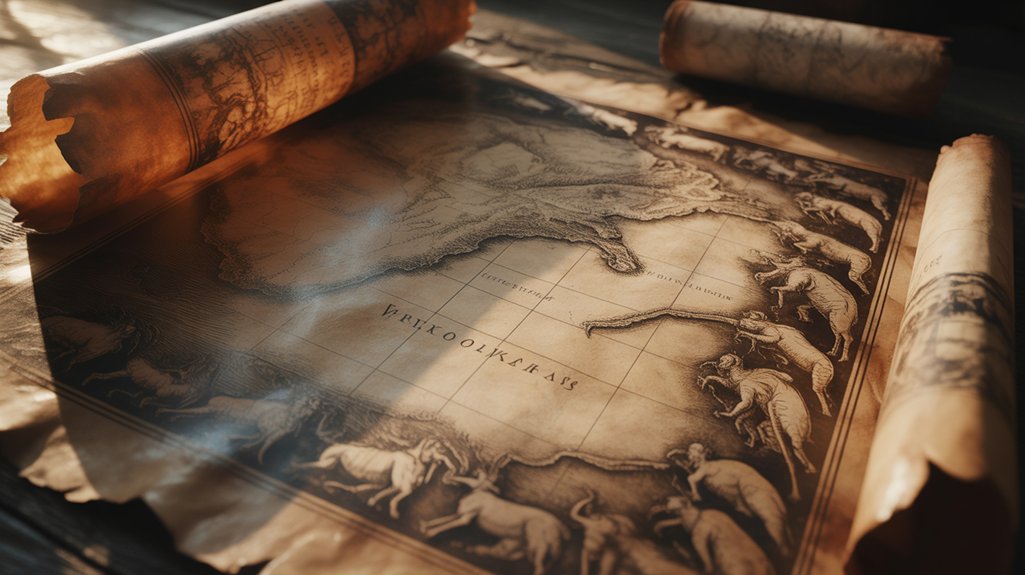
In the shadowed valleys and sun-bleached villages of ancient Greece, the vrykolakas emerged as one of the most eldritch manifestations of humanity’s dread of the unquiet dead—a revenant whose very existence challenged the boundaries between the living world and whatever lay beyond. The vrykolakas origins trace to earlier spirit-beliefs, later crystallizing into corpse-revenants. These creatures wore familiar faces, deceiving loved ones. Communities lived in terror.
| Transgression | Consequence | Preventive Measure |
|---|---|---|
| Improper burial | Corpse reanimation | Heavy stones on grave |
| Unnatural death | Soul’s return | Face-down interment |
| Moral corruption | Vampiric rising | Specific burial rituals |
| Excommunication | Undead wandering | Sacred earth placement |
| Violent demise | Predatory haunting | Protective incantations |
These burial rituals reflected profound anxieties—death’s finality questioned, morality’s eternal consequences. The vrykolakas embodied cultural fears: What if the dead don’t rest? What if our sins follow us beyond the grave? Ancient Greeks understood that some boundaries demand vigilance. Like other folkloric traditions across cultures, Greek vampire mythology developed unique characteristics that reflected the specific spiritual and social concerns of Mediterranean communities.
Blood as Life Force Symbol
Energy itself courses through blood’s crimson channels—a truth humanity recognized long before anatomists mapped the circulatory system or physicians understood hemoglobin’s oxygen-binding properties.
Ancient civilizations understood blood symbolism as the ultimate tether between mortality and transcendence, viewing its consumption as a pathway to stolen immortality.
Blood as Life Essence Across Cultures:
- Egyptian Sekhmet—the leonine goddess who gorged upon humanity’s sanguine offerings, embodying divine wrath sustained through hemoglobin’s power.
- Mesopotamian Lilith—that eldritch night-demon whose predatory hunger altered blood into sustenance beyond mere nutrition, becoming chimeric fuel for her eternal wanderings.
- Greek Empusa and Lamia—vengeful entities whose blood-drinking rituals metaphorically represented loss, grief, and the desperate grasping for energy stripped away.
Jewish folklore’s Alukah further reinforced this paradigm, its vampiric nature demanding protective wards against its relentless pursuit of life essence.
These legends crystallized societal anxieties surrounding disease and death, positioning blood simultaneously as fragility’s reminder and eternity’s seductive promise—a duality that defined vampirism’s enduring appeal.
Vlad the Impaler’s Reign
In the shadow-draped principality of Wallachia, Vlad III Dracula wielded impalement not merely as execution but as eldritch theater—a calculated choreography of terror that altered the bodies of Ottoman invaders and treacherous boyars into grotesque sentinels lining the roads to his fortress.
His reign from 1448 to 1477 witnessed the systematic deployment of this ancient punishment, elevating it from sporadic cruelty to statecraft, as forests of the impaled became both political message and psychological weapon against the encroaching Ottoman tide.
The prince’s brutality, steeped in the chivalric traditions of the Order of the Dragon, merged Christian militancy with methods so visceral they’d echo through centuries, changing historical prince into chimeric legend.
Wallachia’s Brutal Prince
Though separated from Bram Stoker’s fictional count by four centuries of embellishment and myth-making, Vlad III Drăculea—voivode of Wallachia from 1448 to 1477—embodied a cruelty so visceral that it transcended mortality itself, becoming something more than human memory.
Vlad’s cruelty manifested through calculated terror: impalement tactics converted enemies into forests of dying flesh, stakes driven through torsos to prolong agony for days. He defended Christian Wallachia against Ottoman expansion through eldritch violence, his name meaning “son of Dracul”—the Dragon—inherited from his father’s chivalric order.
Historical chronicles record him feasting among impaled victims, dipping bread into their blood, a chimeric fusion of sovereign and monster. This voivode’s legacy seeped into collective consciousness, his brutality so absolute it birthed immortal darkness.
Impalement as Political Strategy
Vlad’s impalement methodology transcended mere execution—it became statecraft written in flesh, a calculated architecture of terror that converted bodily violation into political currency.
Between 1448 and 1477, these impalement tactics decimated Ottoman ambitions, altering Wallachia’s landscape into an eldritch gallery of warning.
Twenty thousand to one hundred thousand souls—the numbers vary, yet the impact remains absolute. Psychological warfare materialized as forests of the dying, their bodies displayed along invasion routes, breathing still when enemies arrived.
The tactic succeeded brilliantly. Ottoman forces retreated before engagement, their resolve shattered by visceral evidence to Vlad’s ruthlessness.
This chimeric fusion of violence and diplomacy consolidated power without sustained military campaign, establishing dominance through spectacle rather than prolonged conflict.
His methods birthed legends that would evolve across centuries into vampiric immortality.
Ottoman Empire Resistance
When Sultan Mehmed II’s armies crossed into Wallachia in 1462, they encountered something beyond conventional warfare—a calculated theater of atrocity that challenged Ottoman assumptions about conquest itself.
Vlad Drăculea wielded impalement as sovereign defiance, altering battlefield corpses into monuments of resistance. Twenty thousand bodies lined the approaches to Târgoviște—an eldritch forest of stakes that halted the conquering sultan’s advance through sheer psychological devastation.
This wasn’t mere brutality; it represented autonomy’s desperate assertion against imperial absorption. Ottoman warfare excelled at territorial subjugation, yet these psychological tactics transcended conventional military doctrine.
The impaled dead became sentinels guarding Wallachia’s fragmented sovereignty, their silent testimony more effective than fortifications. Vlad’s reign from 1448 to 1477 forged a chimeric legacy—monster and liberator simultaneously—where terror served freedom’s preservation against an empire that consumed principalities whole.
Bram Stoker’s 1897 Dracula
- Archetypal consolidation – reshaping scattered vampire myths into codified characteristics that would dominate twentieth-century horror.
- Thematic complexity – exploring sexuality’s darker territories, colonial invasion anxieties, and modernity’s confrontation with ancient supernatural forces.
- Tragic immortality – establishing the vampire as simultaneously monstrous and magnetic, a template echoed endlessly across subsequent media.
Stoker’s Count transcended mere horror villain, becoming a cultural cipher through which societies examine forbidden desires, existential dread, and the persistent human fascination with transgression.
The text endures.
Medical Misdiagnoses Fueling Vampire Myths
Before supernatural explanations could be scrutinized through empirical lenses, medical afflictions masqueraded as vampiric manifestations, altering the sick into monsters within communities desperate for tangible explanations of inexplicable suffering.
Porphyria, that eldritch metabolic disorder rendering flesh hypersensitive to sunlight’s touch, produced lesions and discoloration that marked sufferers as creatures of darkness. Historical misconceptions changed rabies victims—frothing, light-averse, consumed by chimeric rage—into predatory nightwalkers.
Medical anomalies transformed the afflicted into monsters, revealing how disease symptoms mimicked folklore’s darkest imaginings of predatory undeath.
The plague of medical misdiagnoses extended beyond the living. Exhumations revealed decomposition’s natural theater: bloated corpses, blood pooling at mouth corners, skin flushed with reddish hues from bacterial gas accumulation.
These post-mortem changes became evidence. Stakes pierced hearts. Communities, enslaved by fear rather than freed by understanding, enacted ritualized violence against their own dead.
The misunderstood mechanics of bodily decay—mere biological processes—sparked systematic persecution, demonstrating how ignorance breeds oppression, how the absence of medical knowledge chains societies to superstition’s darkest impulses.
Modern Pop Culture Vampires
How did the vampire—that ancient specter of European folklore, that manifestation of plague-born terror and theological dread—evolve into contemporary culture’s most seductive anti-hero? The change began with Anne Rice’s *Interview with the Vampire*, which infused supernatural allure with psychological complexity, altering monsters into tragically romantic figures.
Bela Lugosi’s 1931 *Dracula* established the archetype: predatory, eldritch, utterly other. Yet contemporary iterations—from *Twilight*’s chimeric romance to *What We Do in the Shadows*’s domesticated immortals—reveal profound cultural shifts.
Television series like *Buffy the Vampire Slayer*, *True Blood*, and *The Vampire Diaries* weaponized vampire mythology as metaphor, converting bloodsuckers into symbols of marginalized identity, sexual liberation, societal rebellion.
Gothic romance now dominates the narrative landscape, spawning merchandise empires, devoted conventions, passionate fan communities. The vampire’s evolution mirrors humanity’s changing relationship with otherness itself—no longer simply feared, but desired, understood, even emulated.
These creatures now inhabit liminal spaces between monster and savior, representing freedom from moral constraint.
Undying Legacy of Bloodlust
Through the arterial channels of human civilization, vampire legends persist as primordial acknowledgments of mortality’s darkness—ancient testimonies to humanity’s perpetual fascination with blood, death, and the terrifying possibility of existence beyond the grave.
Bloodlust origins trace back to Mesopotamian Lilith and Lamashtu, eldritch figures whose chimeric forms embodied humanity’s deepest terrors. Greek Empusa and Lamia continued this tradition, their predatory appetites targeting the vulnerable.
Romanian moroi and strigoi emerged from physical anomalies—birthmarks, cauls, deformities—transforming the marginal into the monstrous. Vampire symbolism evolved through these manifestations, representing transgression against natural order.
The 18th century witnessed hysteria crystallize into governmental action: exhumations, trials, documented encounters with the undead. These weren’t mere superstitions but cultural mechanisms confronting plague, premature burial, decomposition’s mysteries.
The legends endure because they articulate what rational thought cannot—the shadow-knowledge that death’s boundaries remain permeable, negotiable, terrifyingly uncertain. Blood calls to blood across millennia.
Frequently Asked Questions
How Do Vampire Legends Differ Between Eastern and Western European Folklore?
Eastern Variations manifest revenants as bloated, ruddy corpses spreading plague through villages, requiring apotropaic rituals involving thorns and garlic.
Western Archetypes, conversely, crystallized aristocratic predators—pale, seductive beings who drain victims through refined bite marks.
The Slavic *upyr* shambles, decays, suffocates; Romania’s *strigoi* alters into eldritch forms.
Germanic and Romance traditions birthed the sophisticated count, a chimeric fusion of nobility and damnation.
Geography shaped fundamentally different nightmares: Eastern folk horror versus Western Gothic romance.
What Role Did the Catholic Church Play in Spreading Vampire Beliefs?
The Catholic Church’s relationship with vampire beliefs proves paradoxical—while officially condemning such superstitions, the Church inadvertently amplified them through its own rituals.
The Catholic Inquisition’s investigations into heretical Blood Rituals created an eldritch framework where transubstantiation blurred distinctions between sacred and profane consumption.
Ecclesiastical authorities documented folkloric accounts, preserving chimeric tales they sought to suppress. This institutional attention legitimized beliefs among freedom-seeking peasants who witnessed clergy’s obsession with corpses, exhumations, and the spiritual dangers of unconsecrated burial grounds.
Are There Vampire Legends in Asian or African Cultures?
Yes, these blood-drinking entities transcend Western boundaries.
Asian vampirism manifests in China’s *jiangshi*—reanimated corpses that hop stiffly through moonlit villages—and Malaysia’s *penanggalan*, a horrifying chimeric form: a woman’s head trailing viscera and entrails.
African folklore reveals the *asanbosam* of Ghana’s Ashanti people, dwelling in treetops with iron teeth, and the *adze*, an eldritch firefly-spirit that drains children’s blood.
Each tradition preserves ancient wisdom about death’s hungry threshold.
How Did Vampire Folklore Influence Burial Practices Throughout History?
Pallid corpses, weighted with stones and iron stakes, lie scattered across medieval graveyards—testament to humanity’s eldritch fear.
Vampire burials altered European death rituals from the 14th century onward, as communities severed heads, positioned bodies facedown, or bound limbs to prevent nocturnal resurrection.
These superstition practices weren’t mere folklore; archaeological evidence reveals thousands of “deviant burials” across Romania, Poland, and England.
Ancient cultures understood what modernity dismisses: death’s liminal threshold demanded vigilance, protection through ritual knowledge passed down through generations.
What Psychological Factors Make Humans Fear Blood-Drinking Creatures?
Blood symbolism resonates through humanity’s collective psyche as the essence of liveliness itself, rendered profane through inversion.
Fear factors emerge from primal anxieties: the eldritch violation of bodily integrity, predation upon one’s animate force, contamination of sacred fluids.
Ancient cultures recognized blood’s numinous power—life-giver altered into death-bringer.
This chimeric reversal triggers visceral dread.
The vampire embodies existential terror: consumption without consent, eternal hunger that can’t be sated, mortality’s dark twin hunting the living.
Conclusion
From Mesopotamian lamassu to Netflix antiheroes, vampire mythology proves the old adage that blood runs thicker than water—binding humanity across epochs through primal fears of mortality and transgression. These eldritch creatures, whether chimeric demons or misdiagnosed porphyria victims, inhabit liminal spaces between life and death. Vlad’s impalement. Stoker’s Gothic masterwork. Modern romanticization. Each iteration reflects its era’s anxieties, yet the archetype endures, eternally feeding upon collective imagination’s darkest recesses. The undead never truly die.

